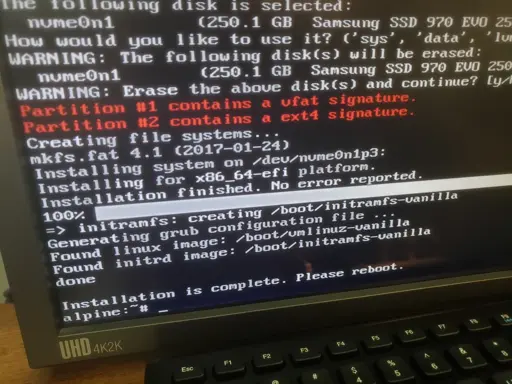- cross-posted to:
- [email protected]
- cross-posted to:
- [email protected]
I will just say:
WHAT THE FUCK are we doing? Alpine has been used in Docker, and Docker is now run everywhere.
WHY are these necessary tools underfunded? They barely even need anything. Why do companies not support them?
Can we start giving at least 0.000001% of net profit to the basic tools used? Can we globally force companies to give the smallest pittance to the open-source projects they make trillions off of?
How are they so small and underfunded? My hobby home servers and internet connection satisfy their simple requirements
800TB of bandwidth per month?
That averages out to around 300 megabytes per second. No way anyone has that at home comercially.
One of the best comercial fiber connections i ever saw will provide 50 megabytes per second upload, best effort that is.
No way in hell you can satisfy that bandwidth requirement at home. Lets not mention that they need 3 nodes with such bw.
50MB/s is like 0.4Gbit/s. Idk where you are, but in Switzerland you can get a symmetric 10Gbit/s fiber link for like 40 bucks a month as a residential customer. Considering 100Gbit/s and even 400Gbit/s links are already widely deployed in datacenter environments, 300MB/s (or 2.4Gbit/s) could easily be handled even by a single machine (especially since the workload basically consists of serving static files).
yet another reason to back flatpaks and distro-agnostic software packaging. We cant afford to use dozens of build systems to maintain dozens of functionally-identical application repositories
I’m a fan of flatpaks, so this isn’t to negate your argument. Just pointing out that Flathub is also using Equinix.
Interlude: Equinix Metal née Packet has been sponsoring our heavy-lifting servers doing actual building for the past 5 years. Unfortunately, they are shutting down, meaning we need to move out by the end of April 2025.
Pretty sure flatpak uses alpine as a bootstrap… Flatpak, after all, brings along an entire distro to run an app.
This is such a superficial take.
Flatpaks have their use-case. Alpine has its use-case as a small footprint distro, focused on security. Using flatpaks would nuke that ethos.
Furthermore, they need those servers to build their core and base system packages. There is no distro out there that uses flatpaks or appimages for their CORE.
Any distro needs to build their toolchain, libs and core. Flatpaks are irrelevant to this discussion.
At the risk of repteating myself, flatpaks are irrelevant to Alpine because its a small footprint distro, used alot in container base images, containers use their own packaging!
Furthermore, flatpaks are literal bloat, compared to alpines’ apk packages which focus on security and minimalism.
Edit: Flatpak literally uses alpine to build its packages. No alpine, no flatpaks. Period
Flatpaks have their use. This is not that. Check your ignorance.
I know there’s limitations to flatpak and other agnostic app bundling systems but there’s simply far too many resources invested into repacking the same applications across each distro. These costs wouldnt be so bad if more resources were pooled behind a single repository and build system.
As for using flatpaks at the core of a distro, we know from snaps that it is possible to distribute core OS components/updates via a containerised package format. As far as I know there is no fundamental design flaw that makes flatpak incapable of doing so, rather than the fact it lacks the will of distro maintainers to develop the features in flatpak necessary to support it.
That being said, it’s far from my point. Even if Alpine, Fedora, Ubuntu, SUSE etc. all used their native package formats for core OS features and utilities, they could all stand to save a LOT in the costs of maintaining superfluous (and often buggy and outdated) software by deferring to flatpak where possible.
There needs to be a final push to flatpak adoption the same way we hovered between wayland and xorg for years until we decided that Wayland was most beneficial to the future of Linux. Of course, this meant addressing the flaws of the project, and fixing a LOT of broken functionality, but we’re not closer than ever to dropping xorg.
/s This was a Snap trap and you walked right into it!! You are right, Flatpaks are great bit you cannot use them for everything. We all need to switch to Snaps so we can build our base packages in them!



